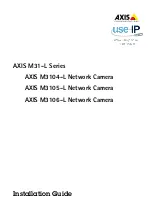
75
MSTP calculation involves the following port roles:
•
Root
port
—Forwards data for a non-root bridge to the root bridge. The root bridge does not
have any root port.
•
Designated
port
—Forwards data to the downstream network segment or device.
•
Alternate
port
—Acts as the backup port for a root port or master port. When the root port or
master port is blocked, the alternate port takes over.
•
Backup
port
—Acts as the backup port of a designated port. When the designated port is
invalid, the backup port becomes the new designated port. A loop occurs when two ports of the
same spanning tree device are connected, so the device blocks one of the ports. The blocked
port acts as the backup.
•
Edge
port
—Does not connect to any network device or network segment, but directly connects
to a user host.
•
Master
port
—Acts as a port on the shortest path from the local MST region to the common root
bridge. The master port is not always located on the regional root. It is a root port on the IST or
CIST and still a master port on the other MSTIs.
•
Boundary
port
—Connects an MST region to another MST region or to an STP/RSTP-running
device. In MSTP calculation, a boundary port's role on an MSTI is consistent with its role on the
CIST. However, that is not true with master ports. A master port on MSTIs is a root port on the
CIST.
Port states
In MSTP, a port can be in one of the following states:
•
Forwarding
—The port receives and sends BPDUs, learns MAC addresses, and forwards user
traffic.
•
Learning
—The port receives and sends BPDUs, learns MAC addresses, but does not forward
user traffic. Learning is an intermediate port state.
•
Discarding
—The port receives and sends BPDUs, but does not learn MAC addresses or
forward user traffic.
NOTE:
When in different MSTIs, a port can be in different states.
A port state is not exclusively associated with a port role.
lists the port states that each port
role supports. (A check mark [
√
] indicates that the port supports this state, while a dash [—] indicates
that the port does not support this state.)
Table 7 Port states that different port roles support
Port role (right)
Port state (below)
Root
port/master
port
Designated
port
Alternate port
Backup port
Forwarding
√
√
— —
Learning
√
√
— —
Discarding
√
√
√
√
How MSTP works
MSTP divides an entire Layer 2 network into multiple MST regions, which are connected by a
calculated CST. Inside an MST region, multiple spanning trees, called MSTIs, are calculated. Among
these MSTIs, MSTI 0 is the IST.
















































